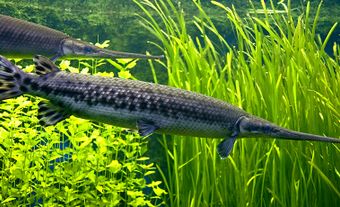
Char is the common name for several species of fish of genus Salvelinus of the salmon family (Salmonidae). Approximately 11 char species occur worldwide. Five are native to Canada: arctic char (S. alpinus), Dolly Varden (S. malma), bull trout (S. confluentus), brook trout (S. fontinalis) and lake trout (S. namaycush).
Chars are distinguished from other salmonids by light-coloured spots (red, pink, orange, yellow or grey) on their dark backs, and the number of anal fin rays (7-12). They spawn in fresh water in fall: arctic char in lakes or rivers; Dolly Varden, bull trout and brook trout usually in rivers; lake trout primarily in lakes. All char, except lake and bull trout, have both freshwater and sea-run populations.
Arctic Char
Arctic char, the most northern salmonid, has circumpolar distribution. In Canada, it is found in the Yukon, northern Northwest Territories and Nunavut, along Hudson Bay, Ungava, Newfoundland and the St Lawrence River. It is important to Inuit and other northern Native peoples as a source of food and income, and supports a small sports fishery.
Dolly Varden
Dolly Varden is restricted to north Pacific Rim countries; in Canada, to the southern Yukon and coastal BC. The species was considered destructive to salmon and trout, and a bounty was paid in Alaska. Generally, it is not a popular sport fish where other salmonids are available; however, increasing pressure on all sport fish has prompted a steady increase in its use.
Bull Trout
Bull trout has only recently been recognized as a separate species closely related to Dolly Varden. In Canada, it occurs in northern and eastern BC and western Alberta.
Brook Trout
Brook trout, or speckled trout, naturally ranging eastwards from Ontario, is now distributed throughout all provinces. Until the mid-1900s, it was highly prized as a sport fish, and has been introduced as far afield as New Zealand and the Falkland Islands. However, like brown trout, it has been replaced by rainbow trout transplants. It is the smallest char (25-30 cm long) and is often found in small, spring-fed headwater streams.
Lake Trout
Lake trout is the largest char; in 1961, a 46.3 kg fish was taken in Lake Athabasca. It has the widest native range of all salmonids in Canada, including all provinces and territories, and some low-latitude arctic islands, and has been widely transplanted. It is the most valuable char in commercial and sport fisheries; however, catches have declined since the early 1960s.
Splake
Splake, or wendigo, a fertile hybrid of lake and brook trout, has been developed and introduced to many parts of North America, primarily Ontario, where a breeding and stocking program has existed for some time.

 Share on Facebook
Share on Facebook Share on X
Share on X Share by Email
Share by Email Share on Google Classroom
Share on Google Classroom


